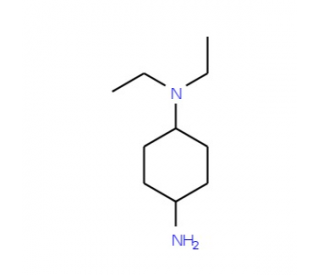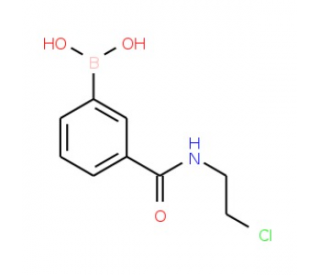详细说明
Species Reactivity
Mouse
Specificity
Detects mouse IL‑17/IL‑17A in direct ELISAs.
Source
Monoclonal Rat IgG 2B Clone # 881309
Purification
Protein A or G purified from hybridoma culture supernatant
Immunogen
E. coli-derived recombinant mouse IL‑17/IL‑17A
Thr22-Ala158
Accession # Q62386Formulation
Lyophilized from a 0.2 μm filtered solution in PBS with Trehalose. *Small pack size (SP) is supplied as a 0.2 µm filtered solution in PBS.
Label
Unconjugated
Applications
Recommended
ConcentrationSample
Flow Cytometry
0.25 µg/10 6 cells
See below
CyTOF-ready
Ready to be labeled using established conjugation methods. No BSA or other carrier proteins that could interfere with conjugation.
Please Note: Optimal dilutions should be determined by each laboratory for each application. are available in the Technical Information section on our website.
Data Examples
Flow Cytometry | Detection of IL‑17/IL‑17A in Mouse Splenocytes Stimulated to Induce Th17 cells by Flow Cytometry. Mouse splenocytes stimulated to induce Th17 cells were stained with Rat Anti-Mouse CD4 PE‑conjugated Monoclonal Antibody (Catalog # ) and either (A) Rat Anti-Mouse IL‑17/IL‑17A Monoclonal Antibody (Catalog # MAB7211) or (B) Rat IgG2B Isotype Control (Catalog # ) followed by Allophycocyanin-conjugated Anti-Rat IgG Secondary Antibody (Catalog # ). To facilitate intracellular staining, cells were fixed with Flow Cytometry Fixation Buffer (Catalog # ) and permeabilized with Flow Cytometry Permeabilization/Wash Buffer I (Catalog # ). |
Preparation and Storage
Reconstitution
Reconstitute at 0.5 mg/mL in sterile PBS.
Shipping
The product is shipped at ambient temperature. Upon receipt, store it immediately at the temperature recommended below. *Small pack size (SP) is shipped with polar packs. Upon receipt, store it immediately at -20 to -70 °C
Stability & Storage
Use a manual defrost freezer and avoid repeated freeze-thaw cycles.
12 months from date of receipt, -20 to -70 °C as supplied.
1 month, 2 to 8 °C under sterile conditions after reconstitution.
6 months, -20 to -70 °C under sterile conditions after reconstitution.
Background: IL-17/IL-17A
Interleukin 17 (also known as CTLA-8) is a T cell-expressed pleiotropic cytokine that exhibits a high degree of homology to a protein encoded by the ORF13 gene of herpes virus Saimiri. cDNA clones encoding IL-17 have been isolated from activated rat, mouse and human T cells. Mouse IL-17 cDNA encodes a 158 amino acid (aa) residue precursor protein with a 21 amino acid residue signal peptide that is cleaved to yield the 137 aa residue mature IL-17. Both recombinant and natural IL-17 have been shown to exist as disulfide linked homodimers. At the amino acid level, mouse IL-17 shows 57% and 87% sequence identity with herpes virus and rat IL-17, respectively. An IL-17 specific mouse cell surface receptor (IL-17 R) has been cloned. While the expression of IL-17 mRNA is restricted to activated alpha beta TCR+CD4-CD8- T cells, the expression of mouse IL-17 R mRNA has been detected in virtually all cells and tissues tested. IL-17 exhibits multiple biological activities on a variety of cells including: the induction of IL-6 and IL-8 production in fibroblasts; the enhancement of surface expression of ICAM-1 in fibroblasts; activation of NF-kappa B and costimulation of T cell proliferation.
References:
Kennedy, J. et al. (1996) J. Interferon Cytokine Res. 16:611.
Yao, Z. et al. (1995) J. Immunol. 155:5483.
Yao, Z. et al. (1995) Immunity 3:811.
Rouvier, E. et al. (1993) J. Immunol. 150:5445.
Long Name:
Interleukin 17
Entrez Gene IDs:
3605 (Human); 16171 (Mouse); 301289 (Rat); 481837 (Canine)
Alternate Names:
CTLA-8; CTLA8cytotoxic T-lymphocyte-associated serine esterase 8; Cytotoxic T-lymphocyte-associated antigen 8; IL17; IL-17; IL17A; IL-17A; IL-17Acytotoxic T-lymphocyte-associated protein 8; IL-17CTLA-8; IL17interleukin-17A; interleukin 17 (cytotoxic T-lymphocyte-associated serine esterase 8); interleukin 17A











 粤公网安备44196802000105号
粤公网安备44196802000105号